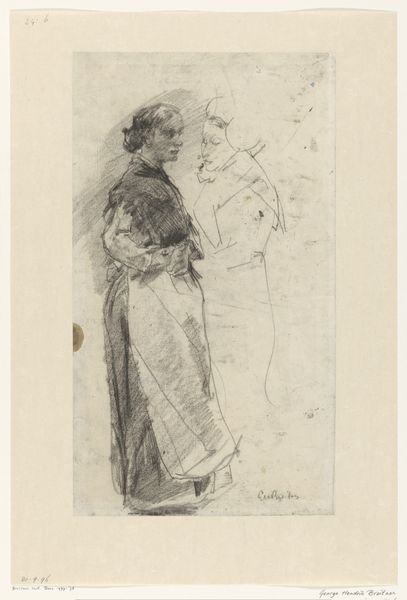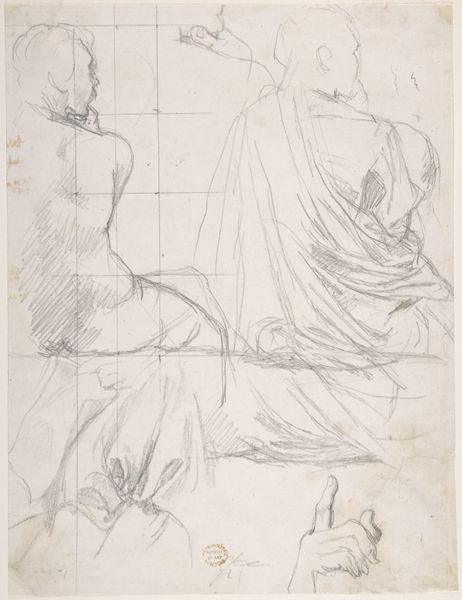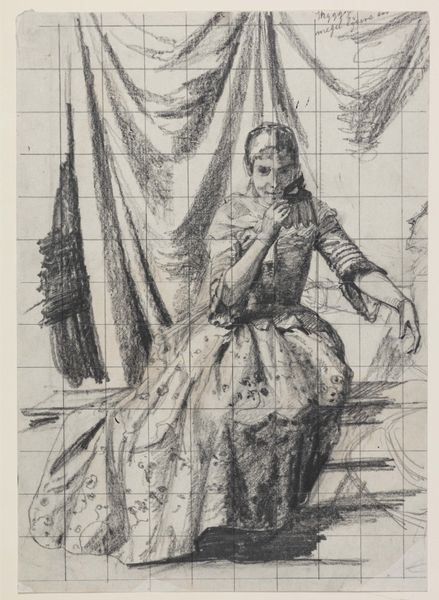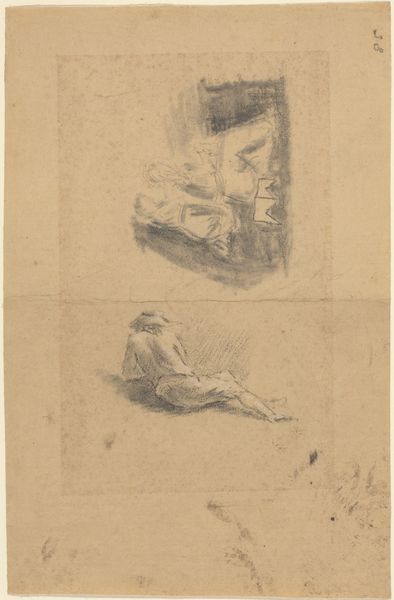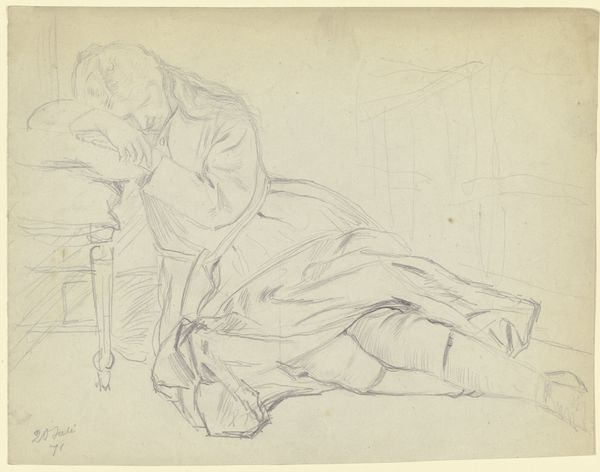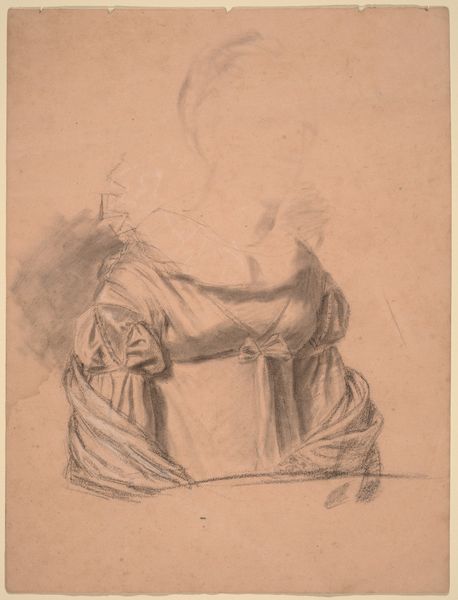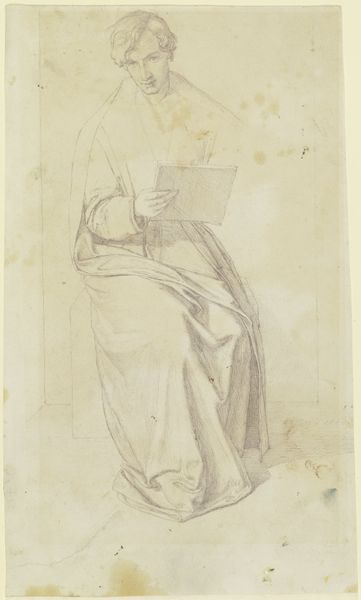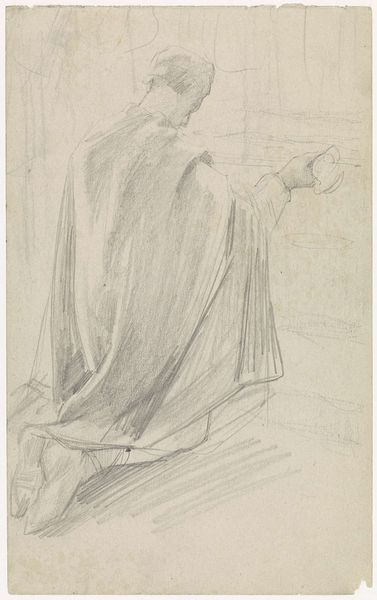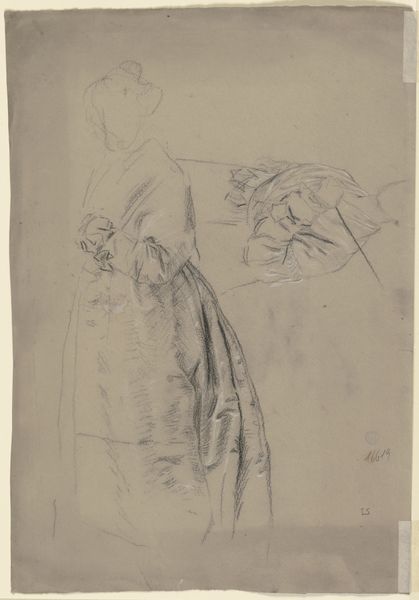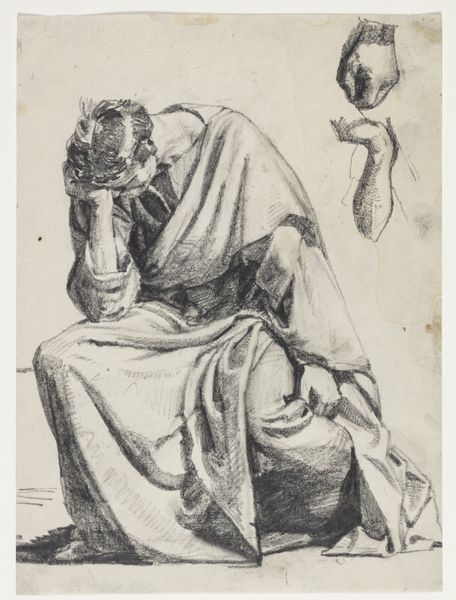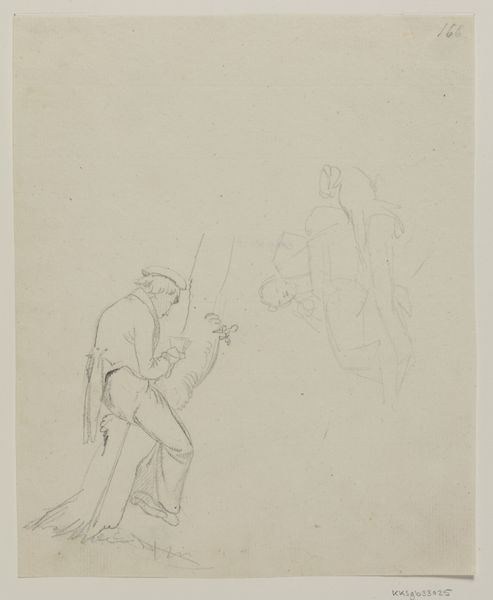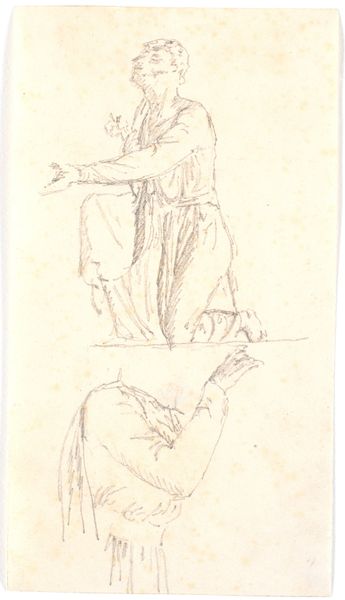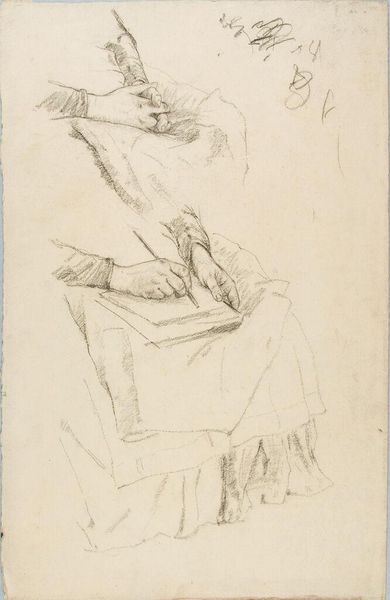
drawing, pencil
#
portrait
#
drawing
#
romanticism
#
pencil
#
history-painting
Dimensions: 315 mm (height) x 265 mm (width) (bladmaal)
Editor: Here we have Carl Bloch's "Study for the etching 'The Young Man and Death,'" made sometime between 1790 and 1890. It's a pencil drawing, currently residing at the SMK in Copenhagen. There’s a vulnerability in the figure’s posture that’s quite striking. How do you interpret this work within the context of 19th-century art and its role in society? Curator: Bloch positions the artwork in a complicated public sphere, right? Romanticism certainly played with the sublime, with emotional intensity, but this preliminary sketch also engages with ideas surrounding morality, mortality, and faith – all potent themes within the socio-political discourse of the 19th century. The museum context elevates it to an object of artistic study, but initially, consider what the piece might have meant for public moral instruction? Editor: That's interesting – almost like a visual sermon? I hadn't considered it as potentially didactic. The gridlines suggest a very deliberate, almost calculated, approach to composition, contrasting with the raw emotion portrayed. Curator: Exactly. How does the institutionalization of art – placing it within the gallery space – shift or reinforce those original meanings and intentions? The drawing becomes not just a religious tool, but also an aesthetic object. How might the viewing public perceive the interplay of these two readings, the faith-based with the aesthetic experience? Editor: I see what you mean. Viewing it as both devotional and aesthetic really highlights the layers of cultural significance. Thanks, that’s given me a lot to think about. Curator: And consider, who were the consumers of this type of art? What did its existence say about their hopes, values, and societal standing? It’s a continual interplay between the artwork, the public, and the institutions that house it.
Comments
No comments
Be the first to comment and join the conversation on the ultimate creative platform.
